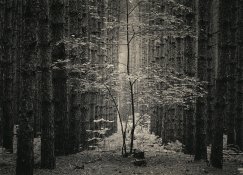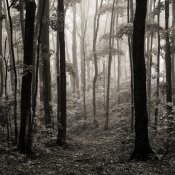Well I wanted to check back in. I bought and used a roll of Delta 400 at box speed, just shooting street scenes around downtown and at a local recreational area / park / lake / bike and running trail. I tried to vary light conditions in the same frame to get a good feel for its latitude in relation to Tri-X ... but I have not yet tried pushing it. That said, it performed very well. I developed in Rodinal stand dev 1:100 for 1 hour. Negatives came out great.
First, these are my impressions and should not be taken as declarations of fact. YMMV.
It is noticeably sharper / more resolving than Tri-X. This was especially apparent in scenes among vegetation, clumps of grass and foliage as you would expect, delineation between adjacent shades are more discernable. The finer grain may play a role here. The tones are pleasant. Even frames that are split between daylight on one half, and dim light on the other (ie. shooting out the window from inside a restaurant), still show a good amount of detail in both highlights and shadows.
What I was most after was clearer, sharper rendering of people / facial features when shooting with a narrow depth of field and trying to capture multiple persons in different planes. What I mean is, if you take a portrait, focused perfectly on a person, with either film, the difference in the results will be less noticeable than if you shoot at F2 into a room full of people. In the latter case, the Delta 400 would, IMHO, render facial features better than Tri-X. But I was surprised at my own reaction to getting what I wanted.
After all my bemoaning clarity, sharpness, resolution, etc. in the end, I have to agree with Thomas B.
There is just something about Tri-X. Certainly the tonality of Tri-X is better. I'm still going to play around with Delta 400 and try pushing it to 800 and 1600 *but I doubt I'll ever make it my default film. My default film is still Tri-X ... and when I can afford to use slower, finer-grained, sharper film, my default is still Delta 100.
Sorry that I have no images to post. I'm still mostly living in the daguerrotype era, at least until I can afford a decent negative scanner, which will be a few months yet. When I have one, I'll try to post a few images here so it's not all just my hypothesizing and ranting.














